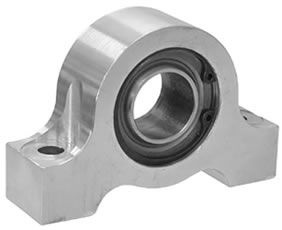OK, this is somewhat embarrassing, except it was a great lesson. I guess I'm embarrassed how long it took to figure out, but not surprised. I'm over my head building this thing but getting better every weekend in the garage.
So... _WAY_ back in '07 when I first started building this car, I knew almost nothing about suspensions or welding.
Basically, I started with these mounts from ISCRacing (these are upside down and not mounted):
They mount in the stock location, like so:
Unfortunately, back then, I had no idea about such things, and simply welded them on willy nilly. Heck the welds are just awful.
Anyway, my cars' handling has never ever been close to what it should be. I tried different shocks, springs, all sorts of suggestions. Then, at one event, I accidentally left the front bar loose, and voila! The thing was transformed.
Over that winter, I decided that my bar must be too big, so I bought the smallest Speedway Engineering bar they make. Unfortunately, the small bar didn't help at all.
I never even thought there could be a problem with the mounts; I just never considered it.
Anyway, I am doing a major once over on the suspension, including measuring everything and entering it into WinGeo3.
About a month ago, as I was measuring everything, I looked over my swaybar, and found the following:
1) Passenger side end link bolt - the nut was bottoming out on the bolt shank, instead of tightening down the end link. The bar has about a 1" zone where it was ostensibly unhooked.
2) The two inside swaybar collars were moving 1/4" inboard from both sides, during a race... and to move like that, they must be jammed up against the bearing at some point.
3) I welded the driver's side bearing mount parallel to the ground - but passenger side is at about a 15* longitudinal angle - meaning when I tighten down both bar mounts, you can't really turn the bar.
So, I can probably use the bearings again... but I just want to start over. I have no faith in them.
The way out is to carefully TIG together some sturdier mounts, put the bar through the bearings on both those mounts, and MIG the mounts on the frame horns while everything's square; tightening as I go to be sure everything lines up and doesn't bind.
I figured some sort of (different) spherical bearing would let there be a slight misalignment without binding.
As to what you're suggesting - it's possible the unibody or frame horns are bending as you suggest - but unlikely. The subframe is bolted about 10" in front of the two mounts. To bend, the subframe would have to bend a lot...
...not saying it isn't happening.
Anyway, lesson learned. I'm better for figuring it out.






